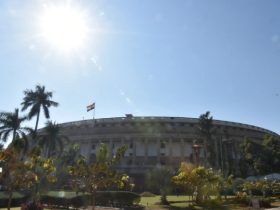This year marks three years since the declaration of the COVID-19 emergency, but the WHO says the threat is far from over. I’d like to hear your thoughts on this.During its regular triennial review meeting last week, the WHO’s Emergency Committee on COVID-19 reaffirmed that the ongoing pandemic should be treated as a “public health emergency of international concern” (PHEIC). A sad milestone has been reached: as of January 30th, we are now four years into this saga.
- When the COVID-19 emergency is officially declared over, that does not mean that the virus is no longer a threat.
“a recognition that the global threat posed by COVID-19 is not over,” said Gavi CEO Seth Berkley. This is very bad news.
However, in everyday terms, what does this actually entail? Come on, then, and we’ll get started.
In the first place, what is a PHEIC?
It’s essentially a worldwide state of alert declared by the World Health Organization, a call to action with legal weight in the 196 countries that have ratified the International Health Regulations of 2005.
“an extraordinary event which is determined to constitute a public health risk to other States through the international spread of disease and to potentially require a coordinated international response,” as defined by the IHR, is a PHEIC.
There has been a “serious, sudden, unusual, or unexpected” event that threatens health beyond the borders of the affected state and may necessitate immediate international action.
Here’s how it works: whenever a potential PHEIC arises, the WHO Director-General will convene an ad hoc meeting of an expert advisory body called the IHR Emergency Committee to make a determination on whether or not there is a PHEIC (potential PHEICs must be reported to WHO by IHR member-states).
The IHR EC has the authority to issue “Temporary Recommendations” on how member states and the Director-General should respond to the crisis if it is determined that the event in question is a PHEIC. In a timely manner, member states must respond. The recommendations made by the EC are reviewed at least every three months up until the PHEIC is dissolved.
The COVID-19 IHR EC held its first meeting on January 22-23, 2020, and at that time they reported that the PHEIC threshold had not been reached. When they got together again a week later, the virus had spread to 18 countries beyond China. The Director-General was urged to issue a PHEIC declaration this time.
Twelve sets of reviews every three months later, and we’re still in the same emergency situation.
The question is, though, have things improved?
We can look back with appreciation and satisfaction at the achievements that have been made.
The availability of vaccines, which have been shown to significantly reduce the risk of serious illness and death, is greater than it has ever been before, with 13.1 billion doses already administered across the globe and 81% of people over 60 protected with a “primary series” (that is, two doses for most vaccines). It is now possible for many hospitals around the world to provide therapeutics that aid the critically ill. Compared to the Omicron spike in early 2022, the current rate of COVID-19 deaths is lower in most countries.
The Emergency Committee recently released a statement in which it acknowledged “substantial global progress over the last three years” and said the pandemic was “approaching an inflexion point.”
However, the fact that we have not yet reduced our global state of alert reflects the fact that things are still bad: vaccine uptake is still insufficient in many places; the virus is still killing a large number of people every week and putting a strain on many overburdened and exhausted health systems.
Globally, 170,000 deaths have been attributed to COVID in just the last eight weeks, according to WHO, and the response to COVID-19 is still “hobbled” in many countries. Vaccines, medicines, and testing that are turning the tide in other countries cannot reach the most at-risk populations in those countries.
In other words, dangerous inequality continues to exist. 53% of people in the 92 low-income countries that make up the COVAX AMC cohort have received the entire primary series of vaccinations, which is a discouragingly low figure compared to Europe’s 67% vaccination rate. With only 34% coverage, Africa lags far behind.
That endangers the already vulnerable population as well as those who have less protection. There are gaps in our global wall of immunity where the virus can rapidly replicate, increasing the likelihood of mutation and, thus, the likelihood of virulent and vaccine-evasive new variants. These gaps exist in areas with low vaccine coverage.
In order to lessen the danger, it is crucial that we all work together to increase our immunity, but the rate at which booster shots are being given out is worrisomely low, at only 34 per 100 people.
Additionally, it is challenging to determine the precise scale of the risk the virus currently poses to the global population due to a decline in testing and reporting compliance. Although over 11 million cases and 55,000 deaths were reported in the 28 days ending on January 22nd, the true infection toll is likely much higher.
However, the 72,596 COVID-19-related hospital deaths announced by China (excluding Hong Kong SAR, Macao, and Taiwan) for the period from 8 December to 19 January, during the dizzying and deadly spike that followed the government’s recent decision to lift its zero-COVID policy, have not yet been accounted for in the reported figures.
Also Read :Strengthening health systems requires improved monitoring and testing
Even though this winter in the United States doesn’t seem as bad as the past couple, midway through January, the average daily hospitalisation rate was still well over 45,000 people.
“My message is clear - do not underestimate this virus, it has and will continue to surprise us and it will continue to kill, unless we do more to get health tools to people who need them and to comprehensively tackle misinformation,” said World Health Organization Director-General Dr. Tedros Adhanom Ghebreyesus recently.
Is it beneficial to maintain a state of worldwide alert?
Yes. At its core, the PHEIC is a mechanism for focusing international effort on a single issue. As Dr. Tedros emphasised, our current virus-shaped problem is still dangerously threatening to too many people to be safely treated as endemic.
Inasmuch as PHEIC designation may serve as a barrier against the development of complacency, rescinding it may have the opposite effect. Despite the fact that millions of new cases are reported every week, funding for virus sequencing activities, for example, has decreased in Europe. There is widespread exhaustion from the pandemic, as seen on the streets by the billions of people who choose not to wear masks.
When it comes to this matter, the EC has exercised its authority to issue
guidelines to better handle the “infodemic” of misinformation and other measures to keep the vaccination momentum going, improve virus surveillance and reporting to WHO, beef up national response capacity in advance of future events, and so on.
How close are we to the end of the PHEIC, and does “approaching an inflexion point” indicate this?
That’s probably true. To the press in December, WHO director-general Dr. Tedros said, “we will be able to say that COVID-19 is no longer a global health emergency by 2023.”
In spite of this, “we thought we could end the global health emergency in 2022,” Dr. Maria van Kerkhove, WHO’s technical lead on COVID-19, recently told CBC. Without these life-saving resources, we were unable to accomplish our goals. We fell short of our vaccination and antiviral distribution targets, as well as the systems we had hoped to put in place.
We seem to have made progress, though. The EC has recently emphasised the importance of establishing long-term, sustainable public measures against COVID-19 in order to ensure a “safe transition” out of the PHEIC. Thus, the committee requested that WHO “develop a proposal for alternative mechanisms to maintain the global and national focus on COVID-19 after the PHEIC is terminated.”
What happens to the vaccines that were used in accordance with the World Health Organization’s “emergency use listing” procedure when the emergency is over?
After the PHEIC ends, no new COVID-19 vaccines will be granted EUL approval, but the status of any existing vaccines will be maintained.
That doesn’t rule out the possibility of future COVID-19 vaccine development. Prequalification will be required for any new vaccine candidates; this is an ongoing assessment that takes into account things like safety, effectiveness, and cold-chain needs. Until a manufacturer decides to withdraw their application, WHO will continue to work with them to move towards prequalification.
Will that be when the pandemic ends?
Not always, and probably not at all. They are two different things altogether. The World Health Organization (WHO) designated COVID-19 as a PHEIC on January 30, 2020, but didn’t call it a pandemic until March 11, 2020. Meanwhile, there are numerous active global epidemics (i.e., pandemics) that are not being managed within the framework of a PHEIC, such as the 7th cholera pandemic and the spread of HIV/AIDS. These expressions are political, which means they are debatable.
The end of the COVID-19 emergency status will not mean that the virus is no longer a threat to humanity, that much is clear. The EC predicted that the virus would continue to spread between humans and animals for the foreseeable future. The objective now and in the future is to lessen the damage it causes.







Leave a Reply